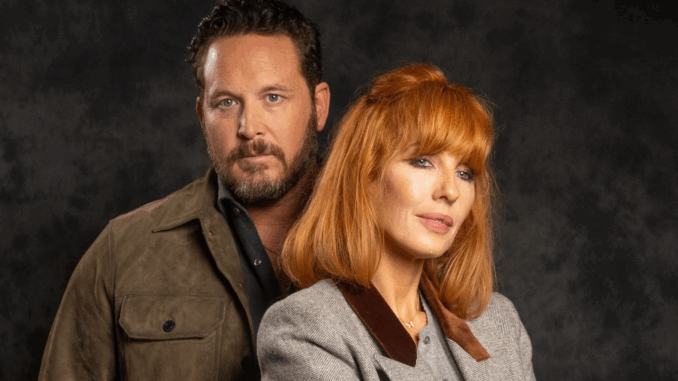
The “Yellowstone” TV Show Is Over, But Not the Damage It’s Done to the West
Yellowstone may have wrapped its final season, but its impact—especially on perceptions of the American West—is far from over. The show propelled Western drama back into mainstream consciousness, but it also deepened myths and sketched complex problems that outlast the final credits.
How Yellowstone Re-Romanticized the West
The show painted the region in sweeping landscapes and hardy cowboy grit from the line riders to the boardrooms. The land looked powerful, timeless, and dangerous in equal measure. But when Hollywood glamorizes the West, it often glosses over real issues like environmental crisis, Indigenous displacement, and economic hardship.
The Popularization That Misses Reality
Tourist sites, local ranches, and visitor centers are reporting skyrocketing attention—and not all of it welcome. Fans go chasing the Dutton vibe, creating new jobs and cash flow, sure—but also raising property prices and stressing small-town infrastructure.
While Yellowstone boosted wallets, it also fueled gentrification and changed rural communities forever.
Environmental Messages Lost in Drama
The plot centered on land disputes, fracking, and water rights, but rarely explored ecological solutions. Watching the Duttons rally against developers, fans cheered—without realizing how real-life ranchers struggle amid climate change, unsustainable water use, and weak public policy.
The show borrowed Western iconography but didn’t offer paths to protect the land it celebrated.
Cult of the “Strong Cowboy” Will Never Leave Screen
With every cowboy ride came a message: real men stay stoic, ride hard, and never quit. That perception has consequences—especially in rural communities already facing mental health crises, low income, and limited access to care.
Emotional resilience is good. Toxic emotional stoicism—that’s a whole different problem.
Indigenous Representation? Not Enough
Yellowstone had some presence of Native American characters, but often as background props or plot devices. Real Indigenous communities in Wyoming, Montana, and beyond still face complex issues—land rights, historical trauma, health disparities, and underfunded education.
The show may have signposted these tensions, but it didn’t address them fully.
Families, Guns, and Violence
Gun violence is woven into the storytelling. While dramatic and addictive on screen, it can obscure how firearms function in real Western life—often tied to accidents, mental illness, economic stress, and insufficient regulation.
Romanticizing gun-laced blood feuds doesn’t help a region trying to reduce accidental shooting deaths and overdose incidents.
Why Tourism Alone Can’t Save the West
Yes, fans booking vacations help. But hype tourism often pushes out local residents, increases traffic, and drives up costs. When small towns lose community roots in favor of tourist dollars, something vital disappears—resilience becomes sterile.
And of course, the jobs built around visitor shops aren’t always Permanente or livable wages.
The Bigger Challenge Left Behind
The show ends—but water wars, opioid addiction, rural poverty, climate change, and inequity continue. And the public discourse rarely dives deeper than Instagram-worthy shots or fence-line standoffs.
Real work needs policy, subsidies, better education systems, and ecological innovation. Drama doesn’t fix drought.
What Responsible Storytelling Could Teach Us
If future shows kept the visual grandeur but layered in real-world solutions—like solar-powered ranches, community-led water-sharing, or mental health access—they’d inspire empathy AND action.
Showing film heroes planting trees, fixing fences, advocating in court, and supporting community centers—now that’s dramatic and practical.
Some Positives Still Shine Through
Despite flaws, Yellowstone got people staring at Western life again. It brought cabin fever to the ranch, reignited conversation about land preservation, and reminded us how powerful landscape—and storytelling —can be.
But it also sets the bar for what we should expect from media: not just flashy filming, but thoughtful, informed realism.
Conclusion
Yellowstone may be over, but the cultural damage it left behind isn’t going anywhere. It’s up to viewers, filmmakers, and policymakers to push beyond the show’s mythos—and help the West heal. Because the true legacy of this land isn’t in television—it’s in how we choose to protect it moving forward.
FAQs
1. Did Yellowstone accurately portray the environmental issues in the West?
Not fully. The show touched on themes like water rights and land use but didn’t dig into solutions like conservation, restoration, or sustainable policy.
2. Has Yellowstone increased tourism to real Western sites?
Yes—it’s boosted interest and revenue for tourist economies. But it’s also driven cost of living and infrastructure strain in small towns.
3. Why is the “cowboy stoicism” in Yellowstone controversial?
It romanticizes stoic silence, which can mask real challenges like mental health struggles in rural areas.
4. Did the show handle Indigenous issues responsibly?
Not completely. Though Native American characters appeared, most were underdeveloped, leaving real cultural struggles underrepresented.
5. What should viewers take from Yellowstone’s finale?
Enjoy the drama, landscapes, and horseback cinematography—but remember it’s fiction. Supporting real-world conservation, rural health, and Indigenous rights helps the West in ways the show never could.
